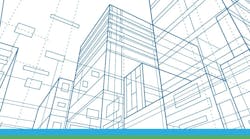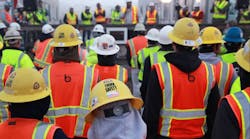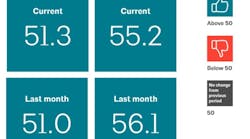PRESS RELEASE
WASHINGTON – March 23, 2022 – Demand for design services in February grew slightly since January, according to a new report today from The American Institute of Architects (AIA).
AIA’s Architecture Billings Index (ABI) score for February was 51.3, up from a score of 51.0 in January. Any score above 50 indicates an increase in billings. Firms reported both project inquiries and design contracts remaining positive in February, but while project inquiries increased to 62.5 from 61.9 in January, design contracts decreased to 55.2 from 56.1.
“Despite the continued healthy demand for design services, activity is plateauing as firms face myriad external challenges, from staffing to supply chain disruptions to high inflation and rising interest rates,” said AIA Chief Economist, Kermit Baker, Hon. AIA, PhD. “While the rebound from the pandemic has positively impacted firms in most regions, the prolonged lack of demand for design services in the Northeast is of growing concern.”
Key ABI highlights for February include:
- Regional averages: South (58.6); Midwest (53.2); West (47.9); Northeast (44.3);
- Sector index breakdown: commercial/industrial (55.4); mixed practice (53.8); multi-family residential (52.6); institutional (47.2).
The regional and sector categories are calculated as a three-month moving average, whereas the national index, design contracts and inquiries are monthly numbers.
Nearly eight in 10 firms say impact of supply chain disruptions on projects is more serious now than one year ago
This month marks one full year since the recovery began at architecture firms, following the pandemic-induced downturn that started in 2020. While billings growth has slowed from the explosive pace of mid-2021, the majority of firms are still reporting steady growth. In addition, inquiries into new projects and the value of new design contracts both remain strong, indicating ongoing interest from clients in starting new projects.
However, billings growth is not evenly spread around the country. While firms located in the South continued to report very strong growth in February, and firms in the Midwest reported moderate growth, firm billings continued to decline at firms located in the Northeast and West. This marks the sixth consecutive month of decreasing billings at firms in the Northeast, and the third for firms located in the West. Firms with an institutional specialization also experienced a decline in billings for the third consecutive month in February, while business conditions strengthened further at firms with a commercial/industrial specialization, and continued to increase at a moderate pace at firms with a multifamily residential specialization.
Economic activity expands, federal interest rates rise
More broadly, economic activity continued to expand at a moderate pace across much of the country from mid-January through mid-February, according to the latest Beige Book report from the Federal Reserve, released on March 2. During the period that input was collected for the report, the omicron variant surge was still causing disruptions in the economy, particularly regarding consumer spending, and widespread severe winter weather also caused difficulty. In addition, ongoing supply chain issues and low inventories continued to be a damper on growth, particularly in the construction sector. However, demand for residential real estate remained strong, despite low inventories of available homes, with the Atlanta district noting particularly strong housing demand. Commercial real estate was more mixed in the Atlanta district, while the Chicago district reported a small uptick in construction and real estate. Overall, the outlook for the next six months in still generally optimistic, despite increasing uncertainty going forward.
Nonfarm payroll employment grew sharply in February, adding 678,000 new positions, bringing total national employment to within 1.4% of its pre-pandemic peak. Construction employment rose by a strong 60,000 new employees, following flat growth the previous month. And architectural services employment continued to grow at a steady pace in January, the most recent data available. With recent revisions to the historical data, total industry employment now stands at 199,200, which means that the pre-pandemic peak of 198,800 has been surpassed. It took 23 months for the industry to recover the 16,000 jobs that were lost in the first half of 2020.
Due to all of these generally positive recent events (strong job growth, substantial declines to the unemployment rate), as well as challenges (elevated inflation, higher energy prices, and the impact of the Russian invasion of Ukraine), the Federal Reserve announced its decision on March 16 to raise the interest rates to 0.25-0.5%, the first increase in the federal funds rate since 2018. Their goal in doing so is to “achieve maximum employment and inflation at the rate of 2 percent over the longer run,” although they caution that other changes may need to be made in the interim.
Firms respond to supply chain disruptions
This month we asked architecture firms about the ongoing impact of supply chain disruptions, in terms of higher costs of materials, longer lead times, and/or less availability, and how those issues have affected their recent interactions with both clients and contractors. Overall, nearly eight in 10 firms (79%) indicated that supply chain disruptions are having a more serious impact on projects at their firm compared to a year ago, with 41% reporting that is a much more serious issue now. Just 5% indicated that supply chain issues are having a less serious impact now, while 16% indicated that they are having about the same impact now. Firms located in the West (82%) and those with institutional (85%) and multifamily residential (82%) specializations were most likely to report that the issues are having a higher impact now, while just 74% of firms with a commercial/industrial specialization reported the same.
Supply chain disruptions have affected firm interactions with their clients in a variety of ways, with the largest share of firms (31%) reporting that keeping clients informed of potential impacts of supply chain disruptions on project costs and schedules was the one most significant response their firm has taken. More than one in five firms (22%) indicated that needing to utilize different materials/product options to avoid potential supply chain problems was their one most significant response, and 20% of firms said that needing to increase estimated cost for project design due to likely complications and delays was their one most significant response. Luckily just a few firms reported that they have had to avoid projects that could potentially be challenging due to supply chain concerns.
As far as their interactions with contractors, the largest share of firms (30%) indicated that their one most significant response has been to encourage contractors to order materials earlier or stockpile needed project supplies to avoid delays, followed by 22% of firms that said that allowing contractors more freedom in materials and product substitution to avoid supply chain disruptions was their one most significant response, and an additional 22% that indicated their most significant response to contractors has been to increase engagement with contractors prior to bid submission. Although 23% of responding firms indicated that they have had to start CCA (construction contract administration) earlier than usual, just 6% of firms selected that as their one most significant response.
This month, Work-on-the-Boards participants are saying:
- “Every project continues to take a very long time to do, despite all clients wanting to move fast. This includes the owners’ inability to keep up with the pace at which they requested the project proceed.”—7-person firm in the Northeast, institutional specialization
- “Cost of construction keeps projects from starting. More value engineering and redesign.”—21-person firm in the Midwest, residential specialization
- “Business is up. Cranes are up. Exciting opportunities are in the works. Dallas is booming!”—100-person firm in the South, commercial/industrial specialization
- “Good, but slowing with delays in government processing and supply chain issues. Rising costs are starting to factor in more heavily as well, with everything from land prices to construction materials and labor prices increasing.”— 30-person firm in the West, institutional specialization.
##########









